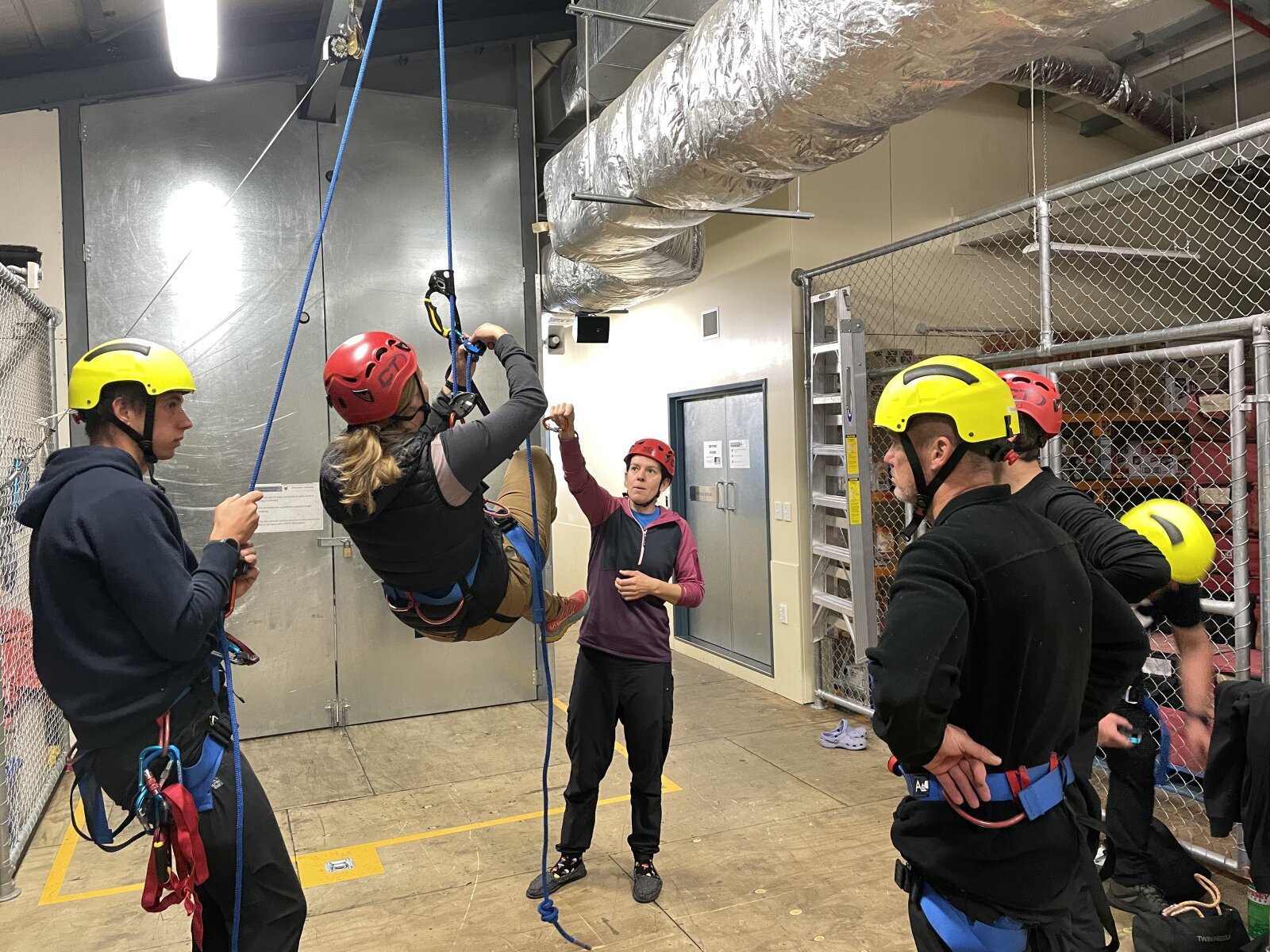Crevasse Training
Crevasses are the hazard that justifies my role here, today we spent a while learning about how to climb out of one in case a fall were to happen. This was the second crevasse rescue training I’ve been on in the last few weeks, and we’ll have at least one more - outside in a hole dug for the purpose, called the SARchasm.
Historically, the techniques and gear used for crevasse rescue in the Antarctic come from the mountaineering world, but we’re transitioning over to an approach based more on industrial work at heights. The new approach seems quite good - it’s got a lot of redundancy and is less reliant on climbing skills, the downside is that the gear is a bit heavier and there’s more of it. As an example, we use two 600g Petzl ID descenders in haul systems where in a mountaineering context I might use something like one 85g Micro Traxion. All our ropes are static, and we don’t need to tie any knots in typical scenarios. The weight isn’t such a concern I guess, as we’re hauling 50-odd tons of gear anyway!
For this training, we climbed up ropes run up to a rafter in the Hillary Field Centre. A belayer held down the other side so that the climber could climb nearly the full length of a rope like a vertical treadmill. It was good fun, and worthwhile since our group has a wide variety of experiences with rope work, ranging from just about none through to fairly advanced mountaineering and industrial work at heights. Hopefully this was just a fun lesson and a bit of good exercise, and we’ll never need to put our new crevasse rescue skills to use!
